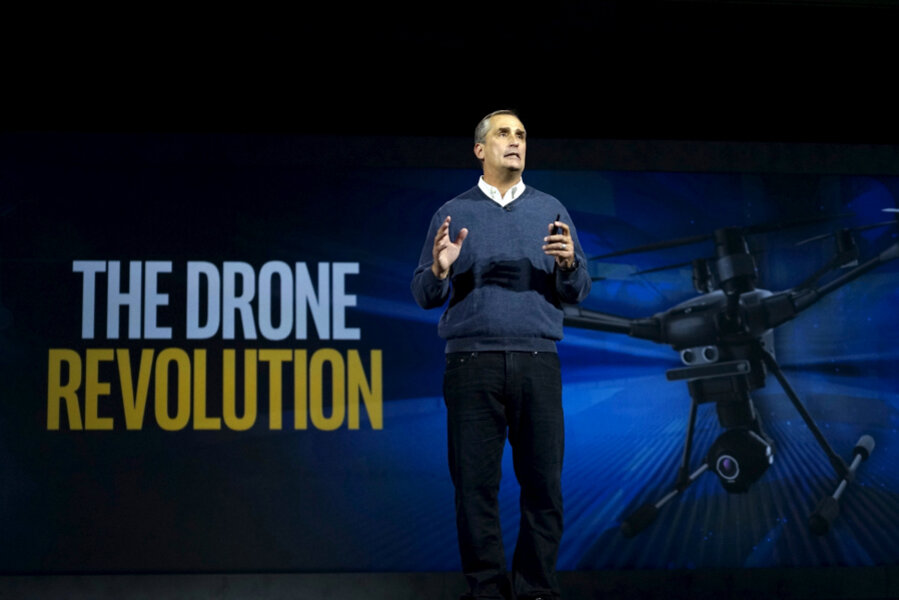As the PC market shrinks, Intel looks ahead to the Internet of Things
Loading...
PC sales have been slumping for years – a Gartner report released on Wednesday estimated that about 8 percent fewer computers were sold in 2015 than in 2014, and that numbers would likely continue to decline in 2016.
On its face, that’s bad news for a company such as Intel, which since the 1990s has made most of its profit by supplying the microprocessors that power computers. But Intel, which will announce earnings on Thursday, has been supplying chips for a whole range of other devices for years now, and the company says it’s not dependent on PCs to be successful.
One huge new category is the Internet of Things, the web of interconnected household appliances, wearables, building sensors, and even cars that already includes more than 5 billion devices. Intel has already outlined a platform to let these devices talk to one another securely, and in December it acquired Altera, a company that makes programmable chips that can be used in Internet of Things devices.
During the CES 2016 technology show earlier this month, Intel showed off chips that can power smart skateboards, drones, and even clothes, including a dress that changed shape in response to the wearer’s body temperature.
“We think this an emerging sector that can sells hundreds of millions of these devices – the pieces of silicon,” Intel chief executive officer Brian Krzanich told USA Today’s Elizabeth Weise. "If every kid under the age of 30 … wants that information, over time that’s a lot of devices when you look across the world.”
Since the sensors and microprocessors found in most Internet of Things devices are fairly inexpensive, it’s not yet clear whether Intel is going to be able to reap a lot of profit from the sector. But the company has another reason for making sure its chips are at the heart of as many Internet of Things devices as possible: Intel missed the boat on smartphones, and doesn’t want to repeat the experience.
Nearly all smartphones, beginning with the original Apple iPhone in 2007, relied on low-power processors based on the ARM architecture and built by Qualcomm and Samsung. Intel’s competing processor, Atom, hasn’t historically been as power-efficient, and phone manufacturers didn’t like the way Intel’s processors ate through smartphone and tablet battery life.
Intel doesn’t want to see the Internet of Things powered by a rival’s microprocessors, so the company has been devoting lots of resources to coming out with small, cheap, low-power chips, including the tiny “Curie” system-on-a-chip.






